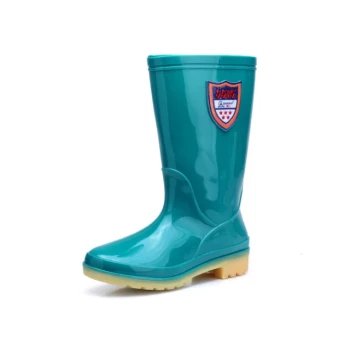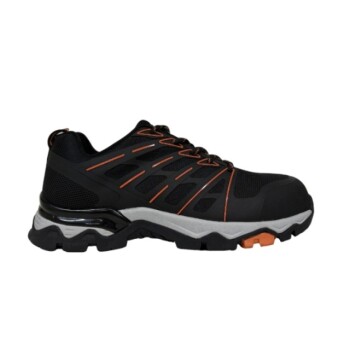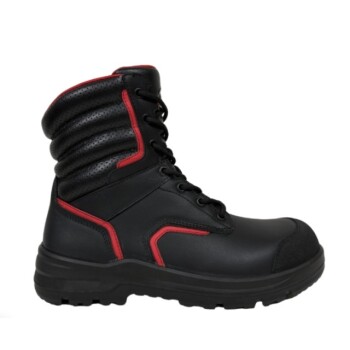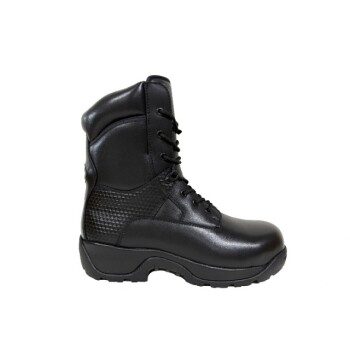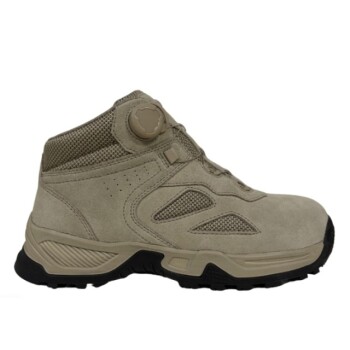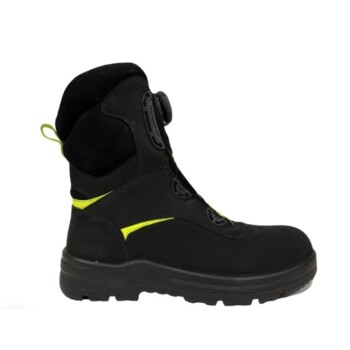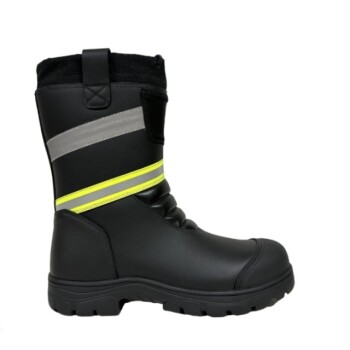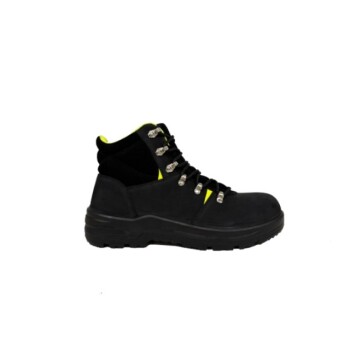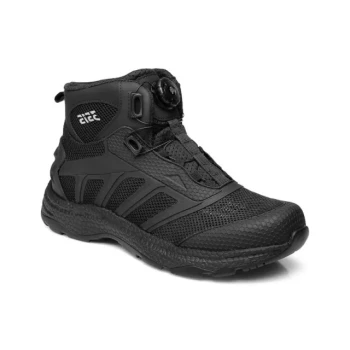The primary ways shoes damage indoor flooring are through direct physical impact and the introduction of abrasive materials. Hard soles and heels create scratches, scuffs, and dents, while the dirt and grit trapped in shoe treads act like sandpaper, grinding away the floor's finish and accelerating its wear and tear over time.
The core issue isn't just the shoe itself, but what it carries. Understanding that your shoes act as a delivery system for damaging grit and invisible contaminants is the key to protecting both your floors and your indoor environment.
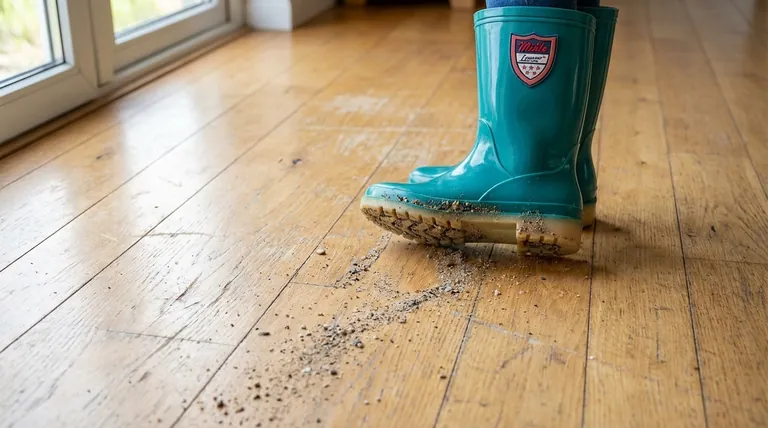
The Mechanics of Floor Damage
The damage caused by wearing shoes indoors is a combination of direct force and abrasive friction. Both mechanisms contribute to the gradual degradation of your flooring, regardless of the material.
Abrasive Materials: The Sandpaper Effect
The most consistent damage comes from small, hard particles lodged in the treads of your shoes.
Think of the bottom of your shoe as a piece of sandpaper. As you walk, the grit, sand, and tiny rocks embedded in the sole are ground against your floor's surface.
This constant friction wears down the protective finish on hardwood, vinyl, and laminate. On softer surfaces like wood, it creates a network of micro-scratches that dull the appearance and make the floor more susceptible to further damage.
Direct Impact: Scratches and Dents
Certain types of footwear are particularly destructive due to their construction.
High heels concentrate a person's entire body weight onto a tiny point, creating immense pressure that can easily dent or gouge wood floors.
Hard-soled shoes, like dress shoes or boots, lack the flexibility to absorb impact. This leads to scuffs and scratches on materials ranging from tile to hardwood when dragged or pivoted.
The Invisible Consequences
Beyond the visible wear on your floors, wearing shoes indoors introduces hidden problems that affect your home's environment and your health.
Contaminants and Air Quality
Your shoes don't just track in dirt; they bring in everything you've walked through.
This includes lawn pesticides, oils from asphalt, pollen, and other environmental chemicals. These substances get deposited onto your floors and can become airborne, degrading indoor air quality.
Health and Hygiene Concerns
For households with young children or pets, these tracked-in contaminants pose a direct health risk.
Children and animals spend significant time on the floor and are more likely to come into contact with or ingest these harmful substances. This exposure can be particularly concerning for those with allergies or respiratory sensitivities.
Understanding the Trade-offs
Deciding on a "shoes-on" or "shoes-off" policy involves balancing convenience against long-term maintenance costs and indoor cleanliness.
The Cost of Convenience
Allowing shoes indoors may seem more convenient for guests and daily life, but it comes with tangible costs.
Floors will require more frequent and intensive cleaning. More significantly, the accelerated wear and tear may lead to premature refinishing of wood floors or even the complete replacement of worn-out carpet or vinyl, which are substantial expenses.
The Myth of Durability
Many assume that durable flooring like tile or stone is immune to shoe damage.
While these materials are resistant to dents, they are not scratch-proof. The same abrasive grit from shoes will dull the finish and grout of tile floors over time, making them look old and dirty.
Making the Right Choice for Your Home
The best approach depends on your priorities for cleanliness, floor longevity, and household convenience.
- If your primary focus is preserving your flooring investment: Implement a strict no-shoes policy to minimize abrasive wear and prevent impact damage.
- If your primary focus is maintaining a healthy indoor environment: Keep outdoor shoes at the door to prevent pesticides, pollen, and other contaminants from entering your living space.
- If your primary focus is convenience for guests: Provide a designated area near the entrance with a bench and a durable mat where shoes can be easily removed.
Ultimately, removing your shoes at the door is the single most effective way to protect your floors and maintain a cleaner, healthier home.
Summary Table:
| Damage Type | Primary Cause | Effect on Flooring |
|---|---|---|
| Abrasive Wear | Grit & dirt in shoe treads | Wears down finish, causes micro-scratches |
| Direct Impact | Hard soles & high heels | Creates dents, scuffs, and gouges |
| Contaminants | Chemicals, pollen, oils | Degrades air quality & poses health risks |
Protect your flooring investment and ensure long-lasting quality. As a large-scale manufacturer, 3515 produces a comprehensive range of durable footwear for distributors, brand owners, and bulk clients. Our production capabilities encompass all types of shoes and boots designed to meet high standards of performance and floor-friendliness. Contact us today to discuss your footwear needs and discover how we can help you provide better products for your customers.
Visual Guide
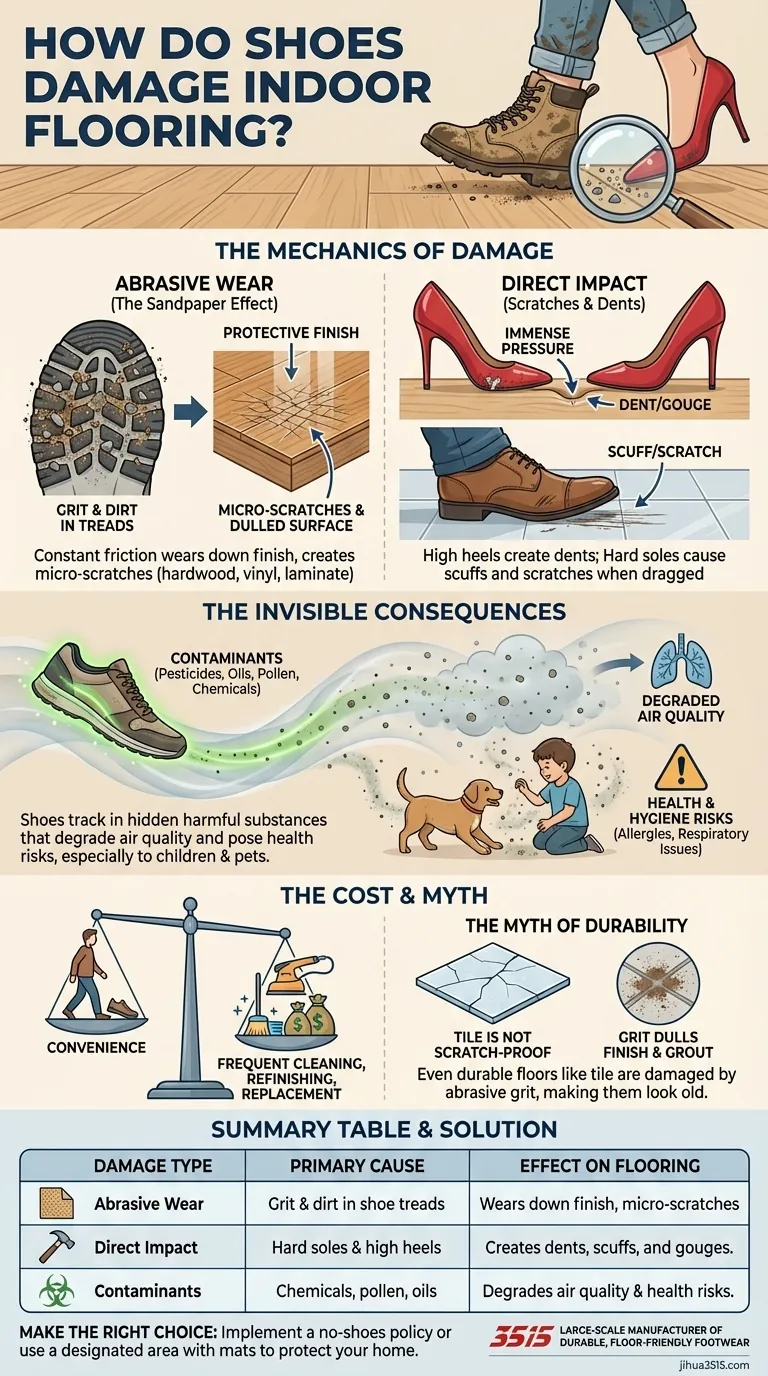
Related Products
- Factory Direct Wholesale Rain Boots Durable Waterproof & Fully Customizable
- Premium KPU Injection Athletic Style Safety Shoes
- Wholesale Durable Breathable Safety Boots Custom OEM Manufacturer
- Wholesale Safety Footwear Manufacturer for Bulk & Custom OEM Orders
- Customizable Anti-Smash Safety Boots for Wholesale & Private Label Manufacturing
People Also Ask
- What are the distinctive features of rain boots? Unmatched Waterproof Protection Explained
- What are the liner materials for rain boots? Cotton vs. Blends for Comfort & Durability
- What are the drawbacks of rubber boots regarding breathability and comfort? Understanding the Moisture Trap
- What are the main materials used in the production of rain boots? A Guide to Durability & Comfort
- What are rain boots made of? Discover the best materials for ultimate waterproof protection.
